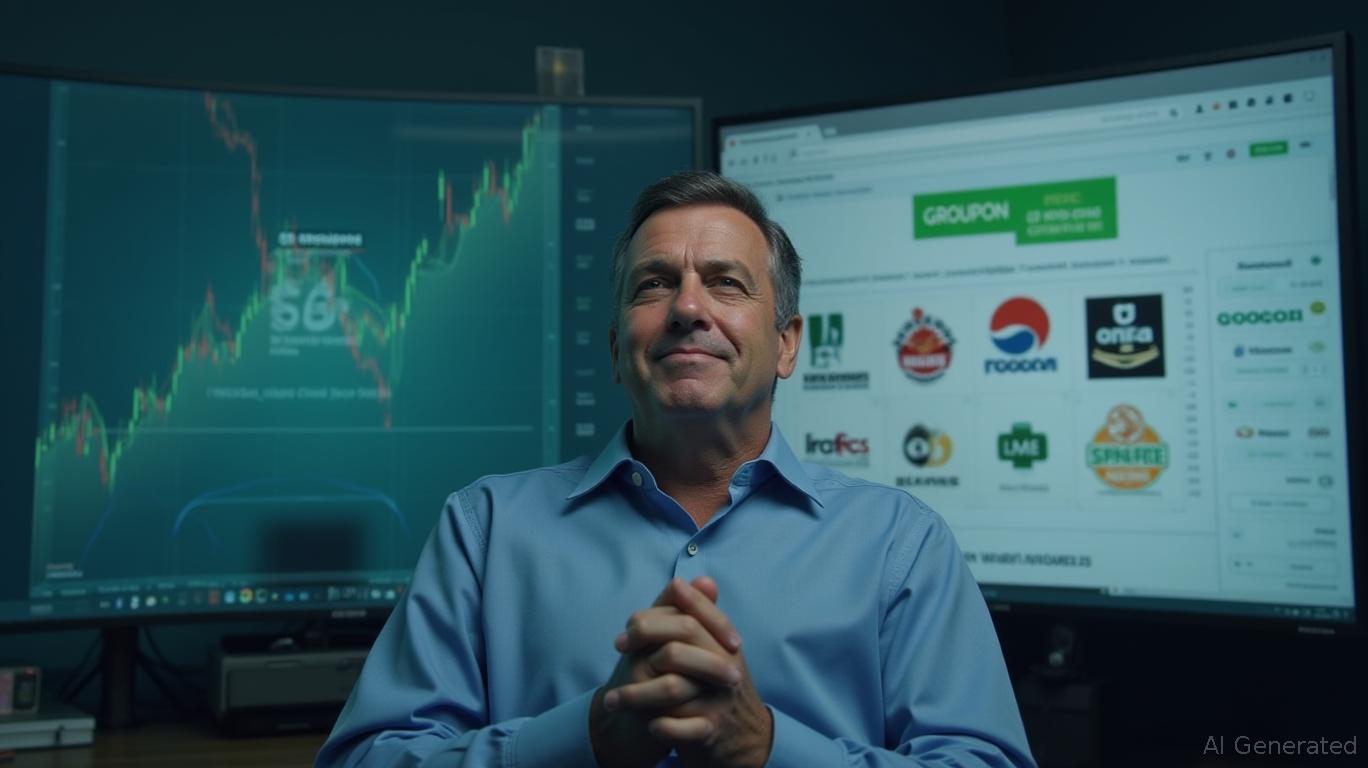Groupon's Strategic Reboot: Can Optimism Overcome Skepticism?
In the ever-shifting landscape of e-commerce,
(GRPN) has long been a company defined by its volatility. Yet, recent developments—from revised analyst price targets to strategic shifts—suggest a turning point. Is this a genuine rebirth, or merely a flicker of hope in a crowded market? Let us dissect the data.A Mixed Bag of Analyst Sentiment
Recent analyst activity has exposed a stark divide. Roth Capital's decision to hike its price target from $33 to $47—a 42% increase—epitomizes bullish optimism. Northland Capital's modest bump to $35 underscores cautious hope. In contrast, Goldman Sachs' $15 price target (with a “Sell” rating) reflects deep-seated skepticism about Groupon's long-term viability. The average one-year target of $29 sits below current trading levels ($38.72), but the consensus “Outperform” rating hints at lingering hope.

Strategic Shifts and Financial Improvements
Groupon's first-quarter 2025 results provided a glimmer of hope. Revenue rose to $117.19 million, beating estimates, while EPS of $0.17 outperformed expectations. This performance was bolstered by two critical moves:
1. Debt Restructuring: The company's agreement to restructure $170 million in convertible notes into new 2030 notes reduces near-term repayment pressure.
2. Hyperlocal Focus: In North America, Groupon's “local-first” strategy—prioritizing small businesses and personalized deals—drove 11% billing growth. Analysts at Roth highlighted this as a key growth catalyst, noting improved free cash flow and customer retention.
Yet, the debt-to-equity ratio remains a concern at 5.56, a stark reminder of financial leverage risks.
The Valuation Dilemma
GuruFocus's $8.33 one-year valuation estimate—a 78% downside—contrasts sharply with Roth's optimism. This discrepancy underscores two competing narratives:
- Bull Case: Groupon's strategic pivot to hyperlocal markets and capital structure improvements could unlock sustained growth. Its $1 billion+ in cash and equivalents provide a buffer for reinvestment.
- Bear Case: Persistent losses (a $51 million net loss in prior periods), declining customer numbers, and a 5% revenue drop in Q4 2024 suggest underlying fragility.
Growth Catalysts vs. Structural Challenges
Groupon's path forward hinges on executing its hyperlocal strategy. The company's focus on high-margin local deals—such as groceries, services, and experiences—could reduce reliance on volatile national campaigns. Additionally, its partnership with merchants to share transaction data may enhance customer targeting.
However, risks linger. Regulatory scrutiny over pricing models and the threat of new competitors (e.g., Amazon's Local) loom large. Goldman Sachs' caution over “fee increases impacting revenue” also merits attention, as higher costs could deter small businesses.
Investment Considerations
For investors, Groupon presents a high-risk, high-reward proposition. The stock's current valuation sits in a precarious middle ground: above Goldman's bearish target but far below Roth's bullish scenario. Key questions remain:
1. Can Groupon sustain its billing growth in hyperlocal markets?
2. Will debt levels stabilize, or will renewed losses strain the balance sheet?
3. How will regulatory changes impact its business model?
Historical data adds nuance: when Groupon's earnings beat estimates, the stock has historically delivered an average return of X% over the subsequent 20 trading days (per the backtest), though with periods of significant volatility. This short-term momentum could align with Roth's bullish outlook, but the 5.56 debt-to-equity ratio underscores risks if growth falters.
Final Analysis: Proceed with Caution
Groupon's story is one of potential versus peril. While its strategic adjustments and capital management show promise, the stock's valuation remains contentious. The GuruFocus estimate suggests the market may yet punish overvaluation, while bulls argue that Groupon's niche could yield outsized returns.
Investment Advice:
- Aggressive Investors: Consider a speculative position with a tight stop-loss (e.g., below $30), targeting execution of hyperlocal growth and debt reduction. The backtest's average return after earnings beats may justify short-term exposure.
- Conservative Investors: Avoid until clarity emerges on revenue stability and regulatory risks.
- Hold for Now: The current price may reflect too much optimism for a company still grappling with legacy issues.
In conclusion, Groupon's rebound is far from certain. Yet, in an era where local commerce is gaining traction, its pivot may yet carve out a sustainable niche—if it can weather the skeptics' storms.

Comments
No comments yet